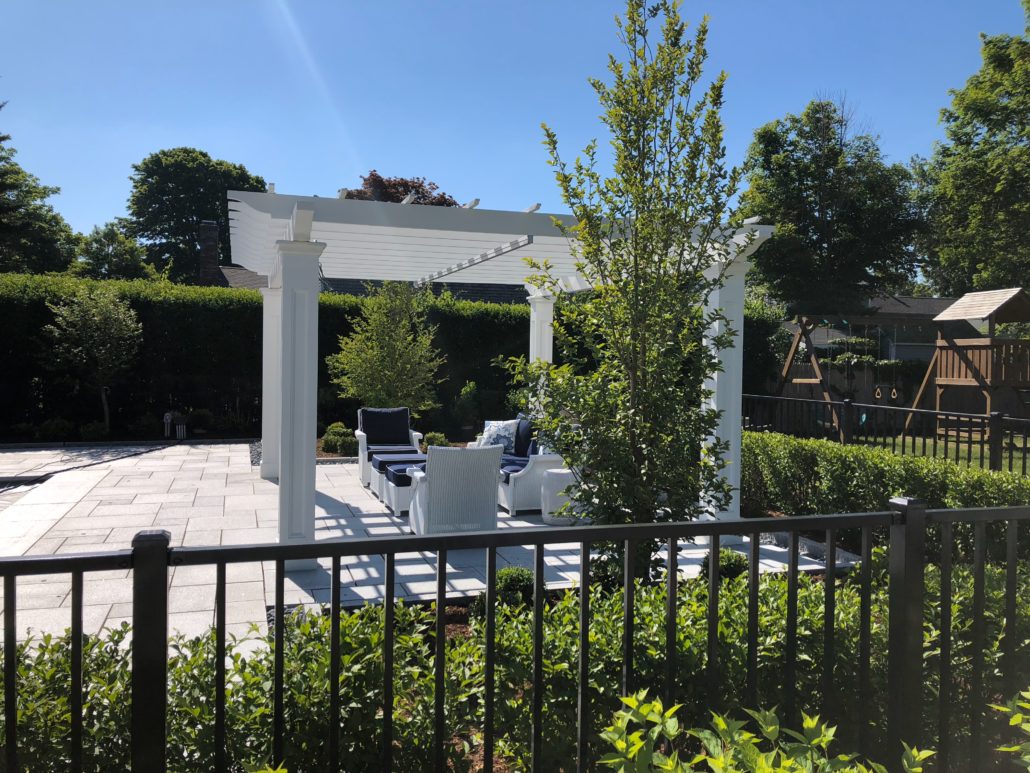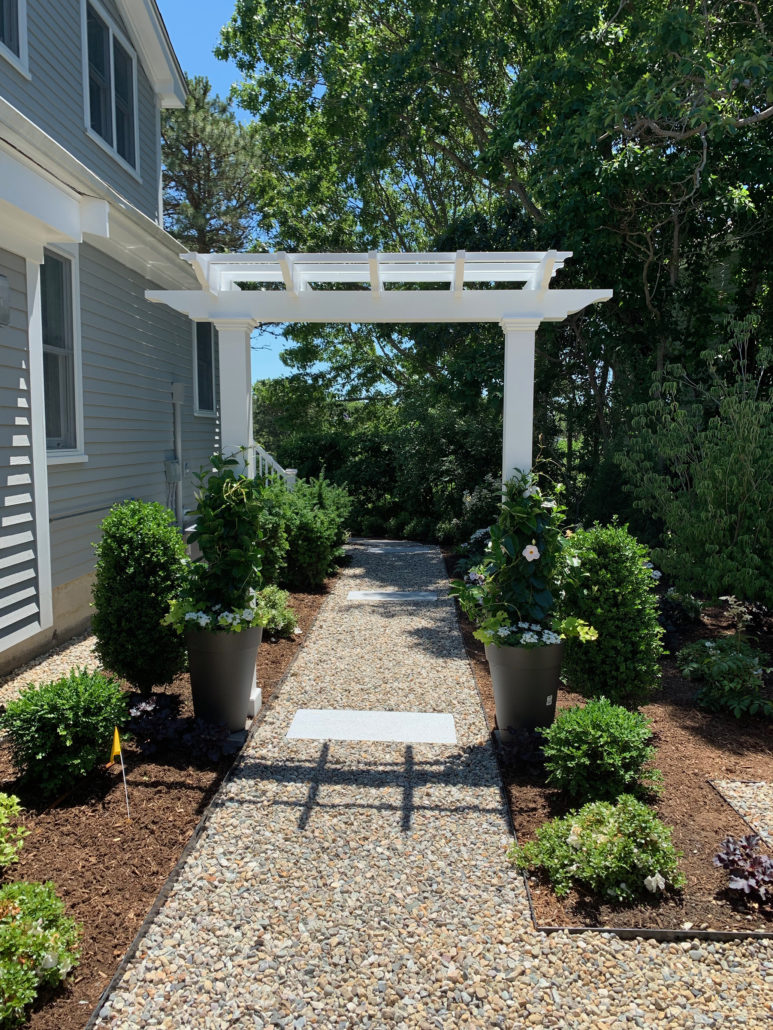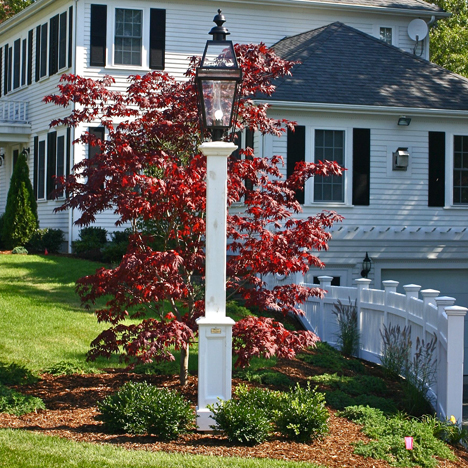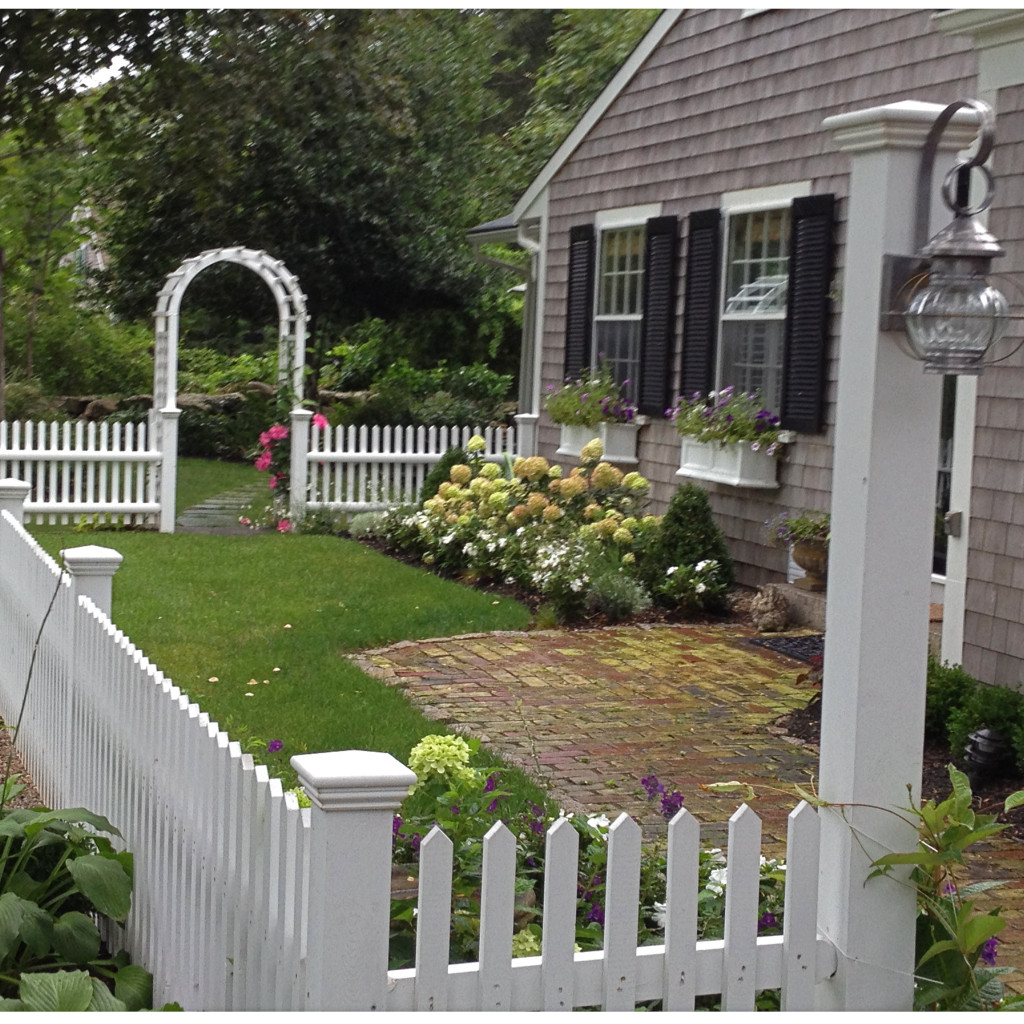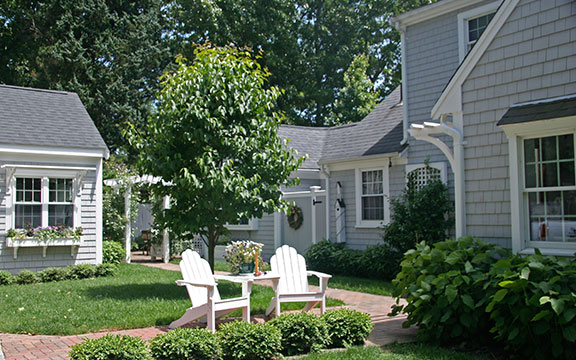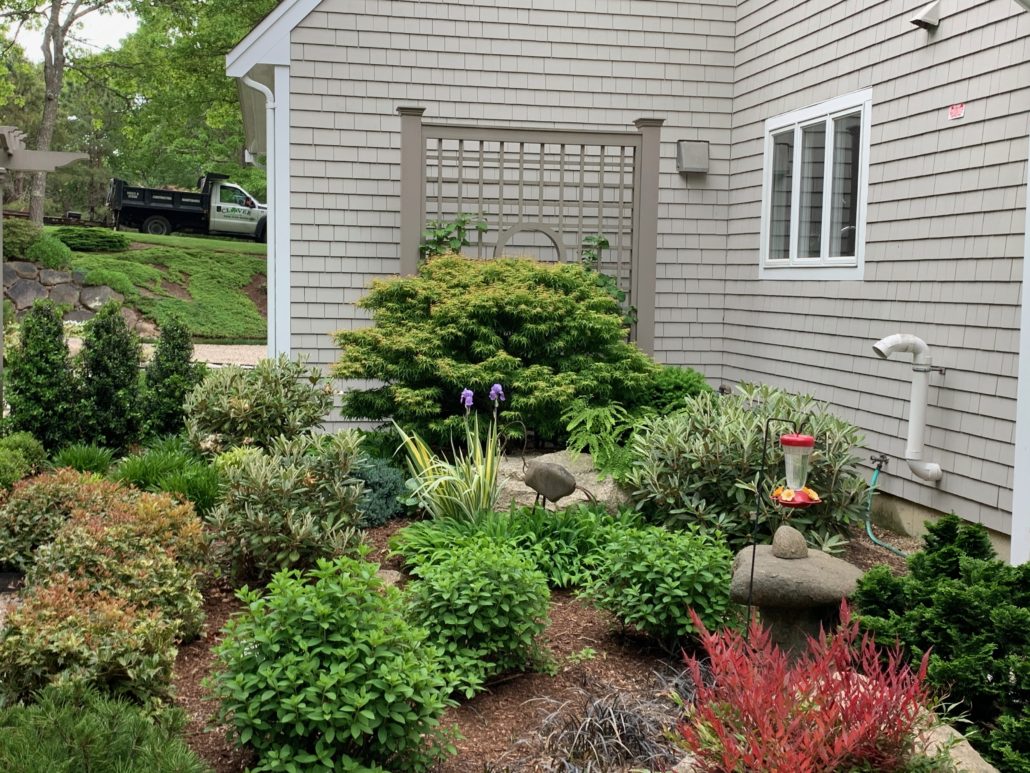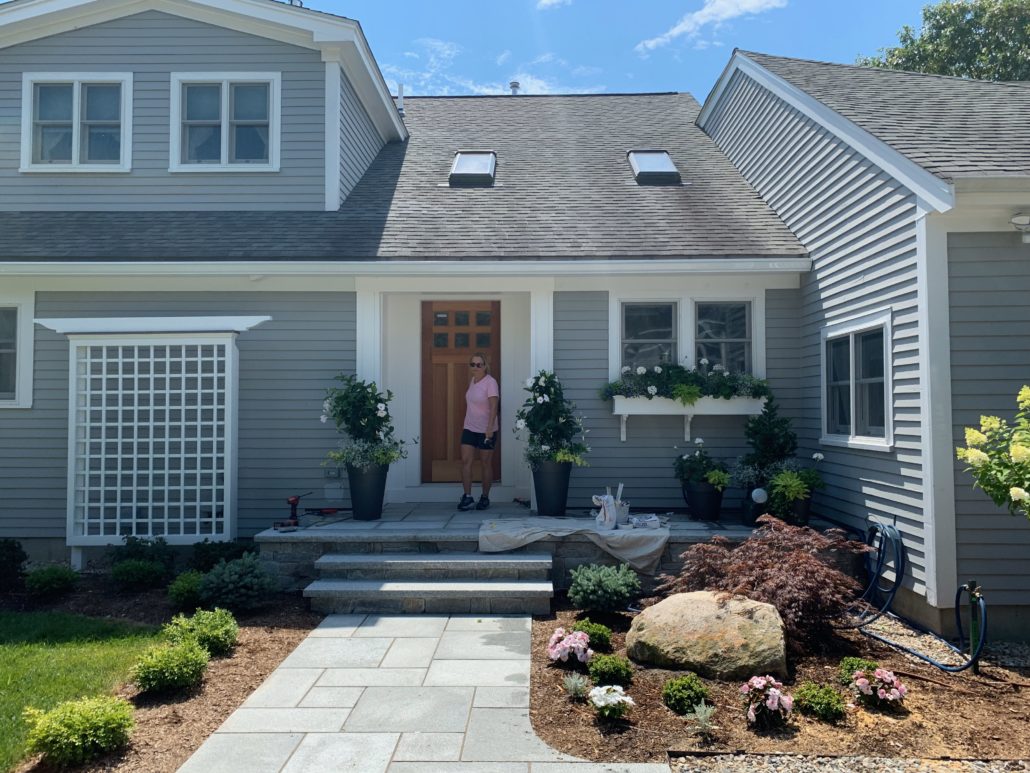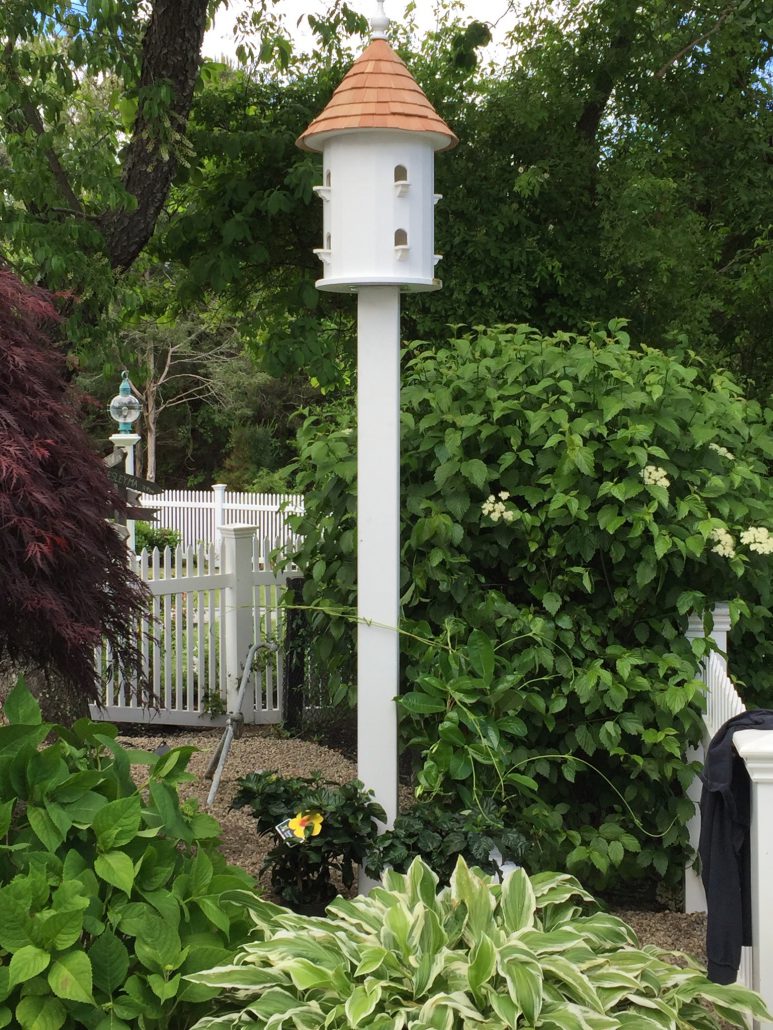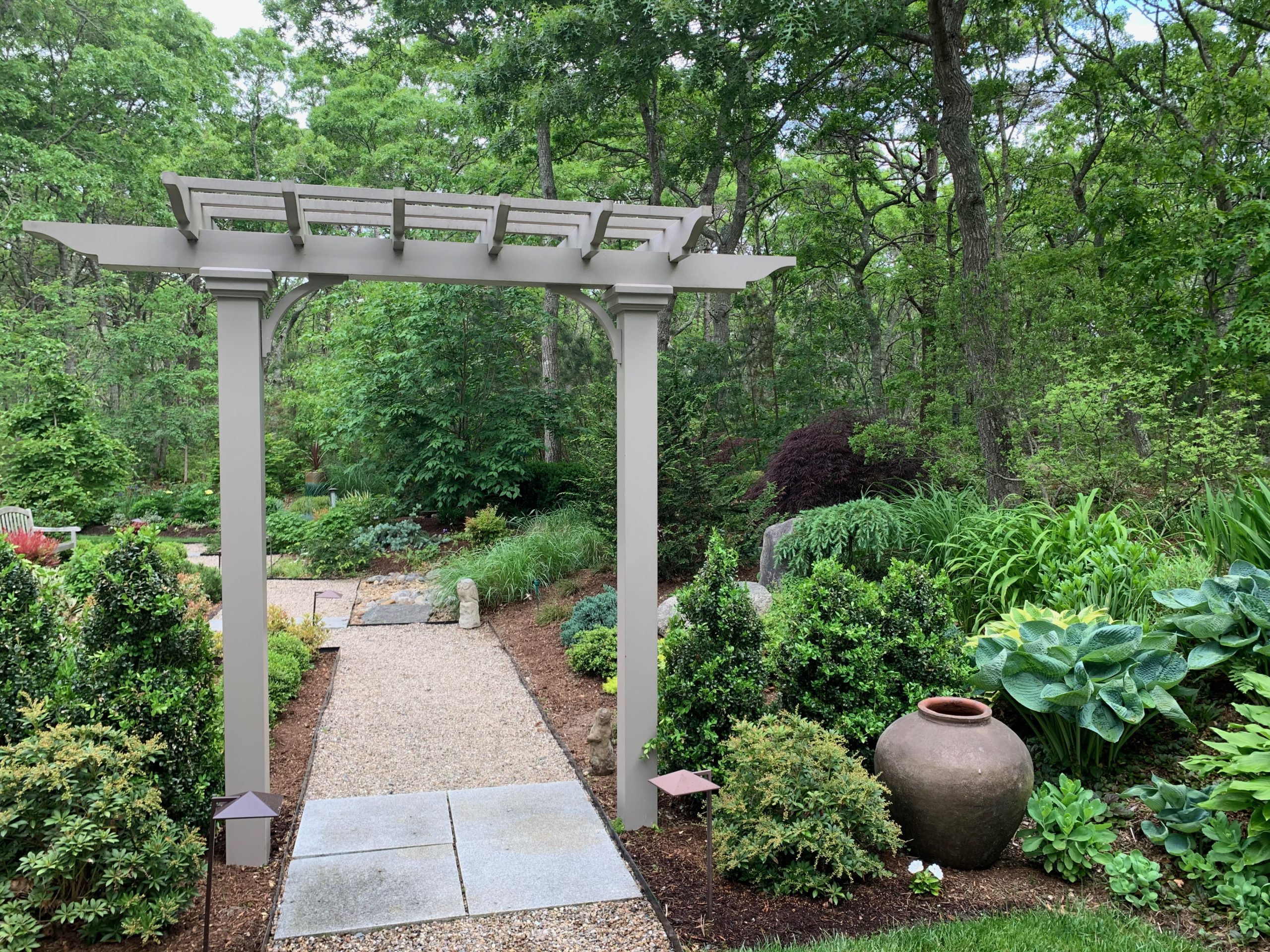
Architecture in the Garden
“The elements of garden architecture—paths, walls, gates, fences, terraces, sheds, lighting, furniture, waterworks, and art—together form the backbone of any well-designed garden.” _James von Sweden_Architecture in the Garden

The lovely pergola pictured below is enhanced by the addition of the lovely seating group. The plantings compliment as well and were meticulously selected and planted to achieve this pleasing tableau. Custom pergola and furniture by Walpole Woodworkers. Design_Elaine M. Johnson.
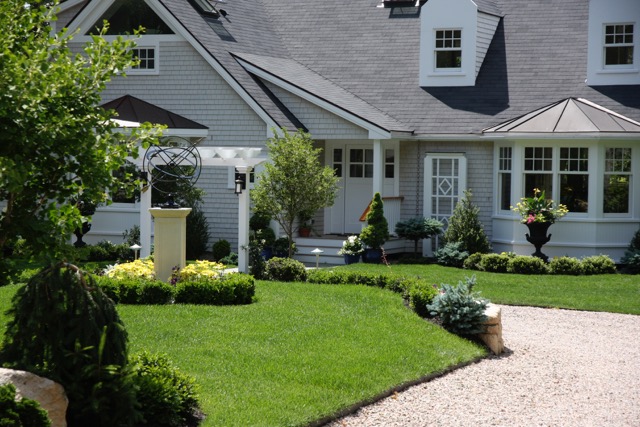
I have mentioned the importance of ‘good bones’ in garden design which refers to the structure and framework present before plantings are introduced. When a design opportunity presents itself for integrating an arbor, lattice panel, pergola, or gate I immediately turn to the beautiful catalog put out by Walpole Woodworkers for inspiration. Many custom designs have started here and then were adapted to suit the intended application. For those of you who wish to further your study I highly recommend James van Sweden’s Architecture in the Garden for a deeper understanding of how to design an outdoor space that suits your tastes and lifestyle. He inspires us to move beyond the view of a garden as just a collection of plants to the realization of the need for architectural order into every aspect of the landscape program.
Certainly, Mother Nature is the quintessential landscape architect and by studying her forms we can begin to see the order and hierarchy she imposes. In deciding what structural man-made elements to add we can look to her for inspiration in the topography of the land and the natural arrangement of trees, shrubs and rocks. In the photographs that follow pieces were chosen to integrate with the overall feel of the garden, the plantings and, very importantly, the style of architecture of the home. All of these examples are of traditional homes here in New England and the elements chosen are suitable for this genre. A first step then would be the careful evaluation of your home’s architectural style and then deciding how and where a well-designed feature can add functionality and aesthetic appeal.
Below the lovely specimen, Camperdown Elm is a great example of the architectural appeal of trees. Here one can see the lovely silhouette in Winter. Trees should be given special attention for placement and I will speak more to this in a later post.
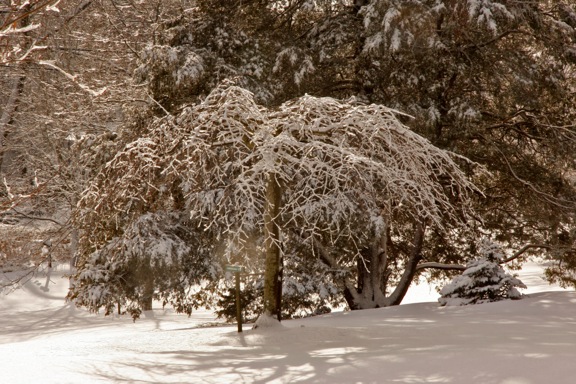
I love a beautiful arbor and the one below shows the traditional radial/spindle top design with double gates. Its placement serves to separate two areas or “rooms” in the landscape, beckoning one to enter a private garden space from the area of the drive and side entry. It is also a focal point in the outdoor space and serves the function for supporting adjacent plants. The proportion and scale are well-chosen and the stained white cedar promises years of durability with minimal maintenance.
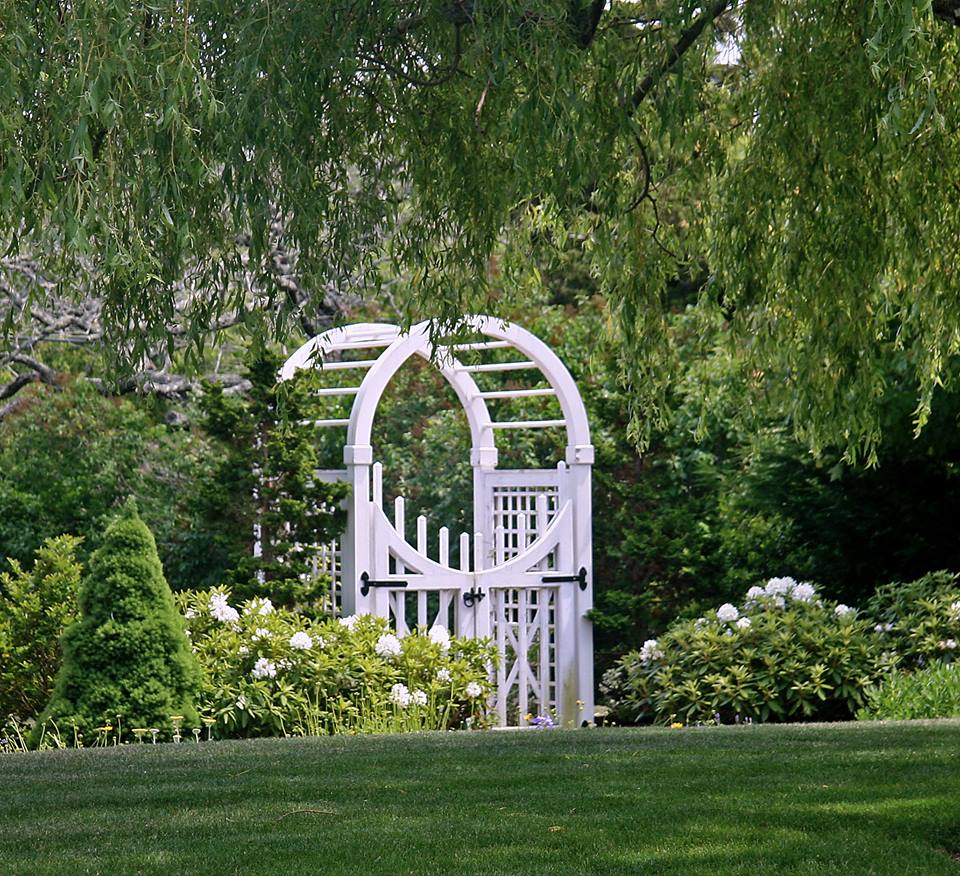
As a departure from this very traditional style of arbor we now see a custom piece constructed of Azak used to create a sense of welcome to the front door of this charming Cape residence. Beyond one will notice the lattice panel erected on posts, also in azak, and the geometric pattern ‘marries’ well with the architecture of the home The arbor placement gives a sense of pause before proceeding on the journey to the front door. A circular piece of bluestone was added to the walk to enhance this suggestion. An important design decision for the arbor choice was the relative short distance from the drive to the front door. The lack of depth to the piece does not seem overly heavy or encroach on this dimension.. Proportion is key in designing any man-made element.
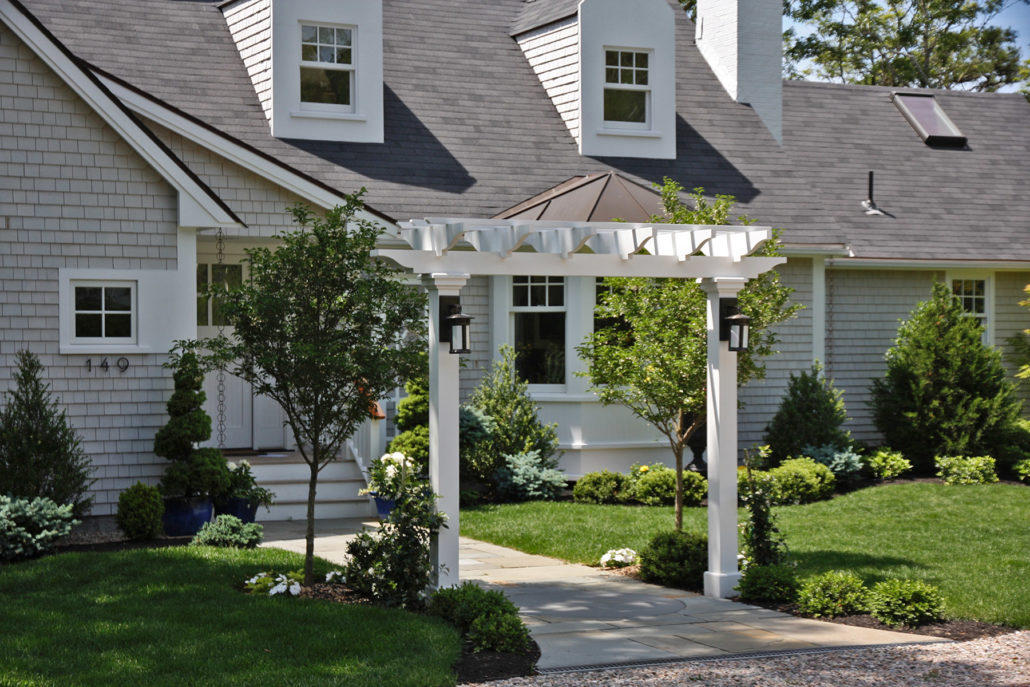
Concluding this brief introduction to the use of architecture in the garden I have included a custom lattice panel in the front entry garden of a magnificent shingle- style home to underscore the importance of consulting the house for design inspiration. The diagonal lattice gives depth, the cap mirrors the arch of the portico and the oval inset replicates a window on the front facade. The terrace is bluestone and this blank wall served as a perfect location. Plants are not always the answer for these kinds of spaces a long a foundation. Also the dark “Verdi green” stain matches a trim color and fits well with the container plant choices and surrounding foundation plantings.
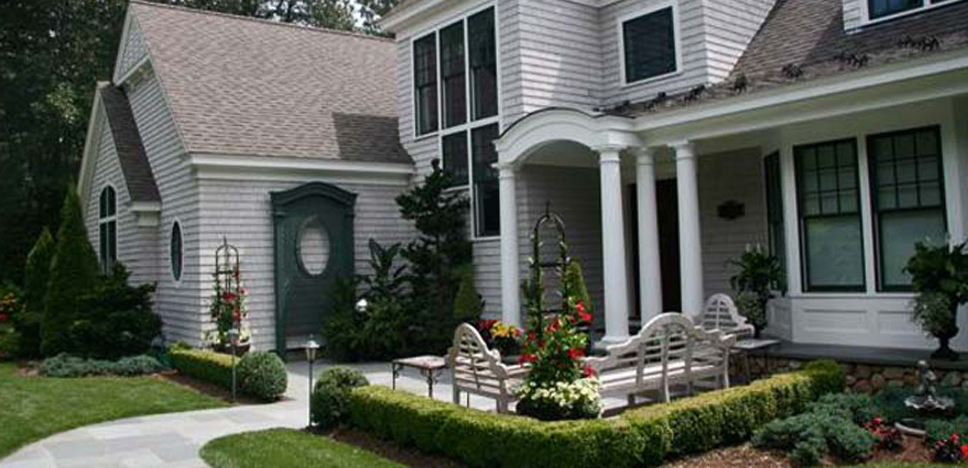
Little things can often make a dramatic change and the use of a simple “pergola” style eyebrow over this side entry to a garage was just the right touch. Lattice panels flank the door and ultimately climbing hydrangea ( Hydrangea, petiolaris ) will form a leafy canopy. The possibilities are there in your own landscape to use some of the suggestions presented here and it is my hope to have motivated you to consider that option.
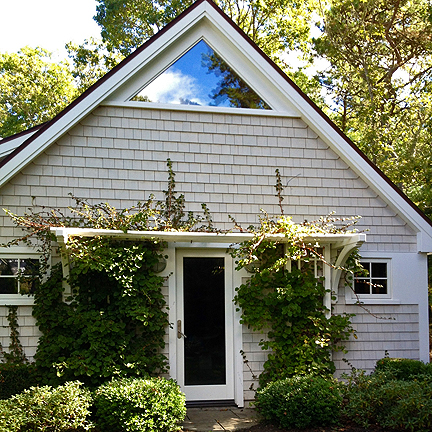
The additional photos included here show various architectural pieces and how they can be used in the landscape. A well-placed arbor, traditional picket fence, or a wonderful lamppost can be all that is needed to give distinction and interest. Take the time to walk around your gardens, pay attention to the architectural style of your home and select a feature that will compliment all. Sometimes a well-placed birdhouse can add that all-important focal point.
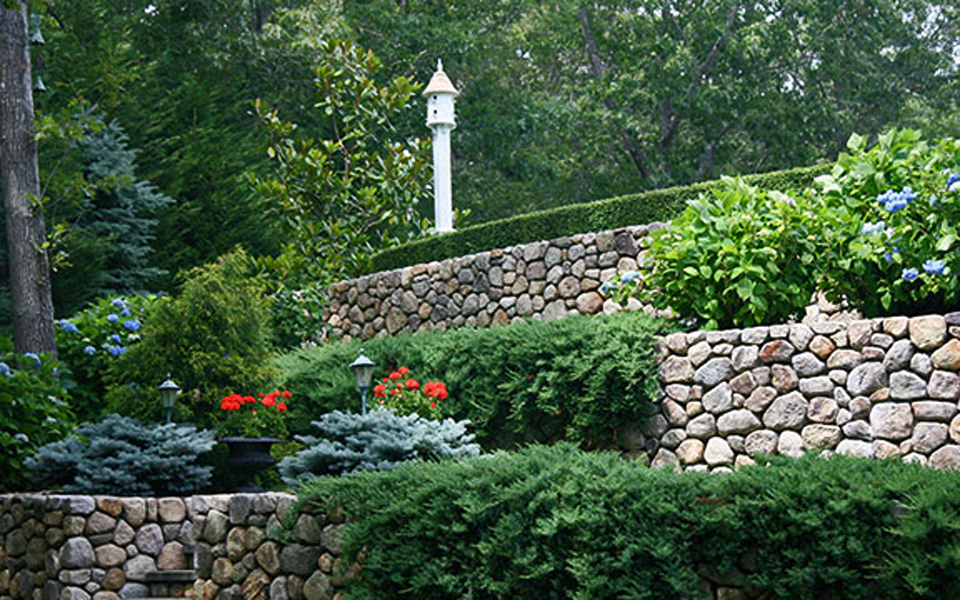
I have chosen some more examples of lovely architectural elements to inspire you. Perhaps you can find just the right one for your garden.

